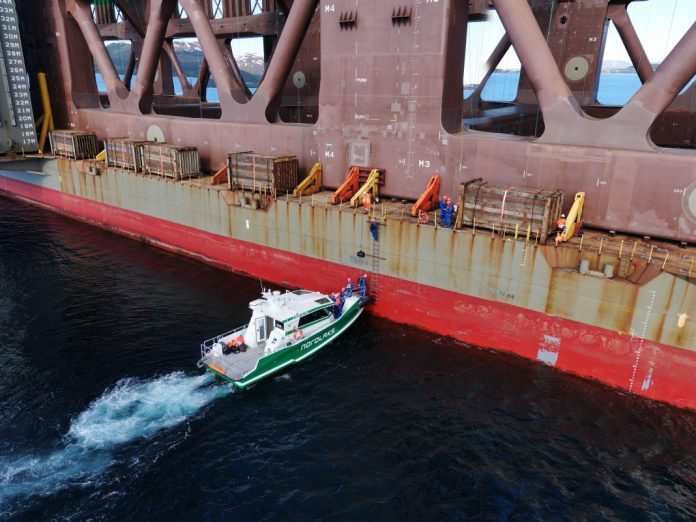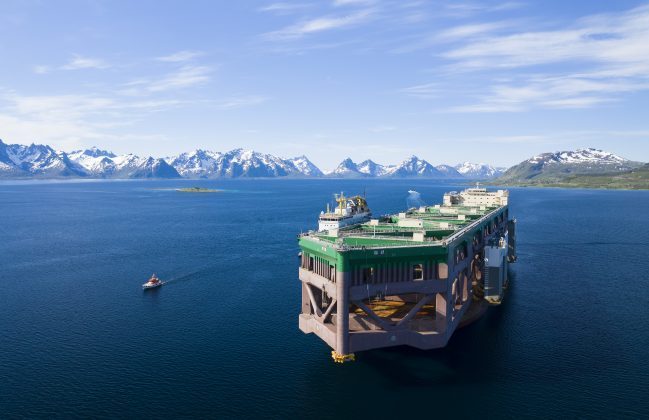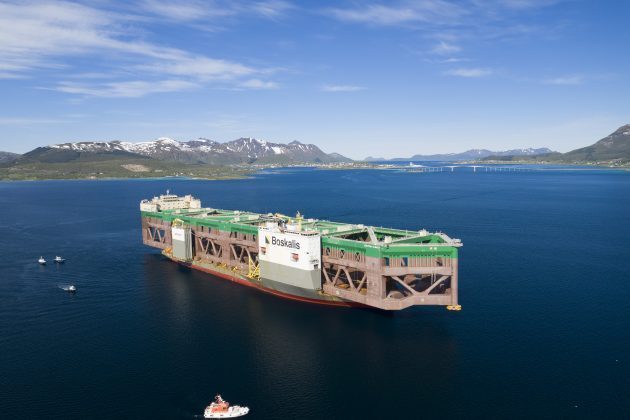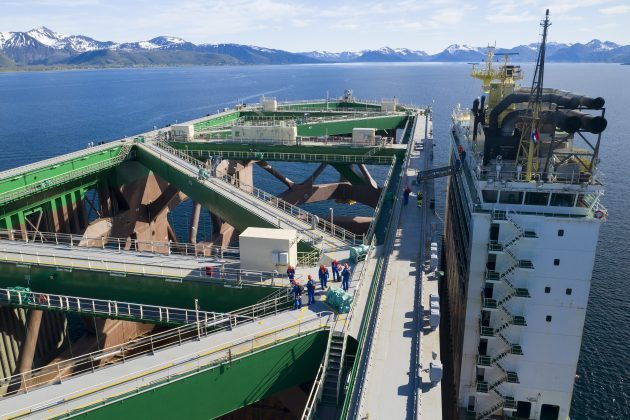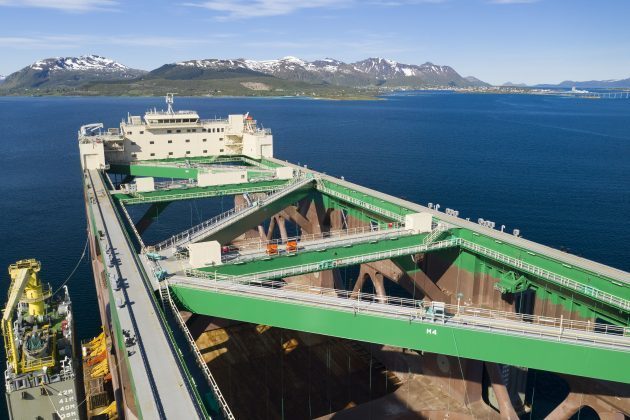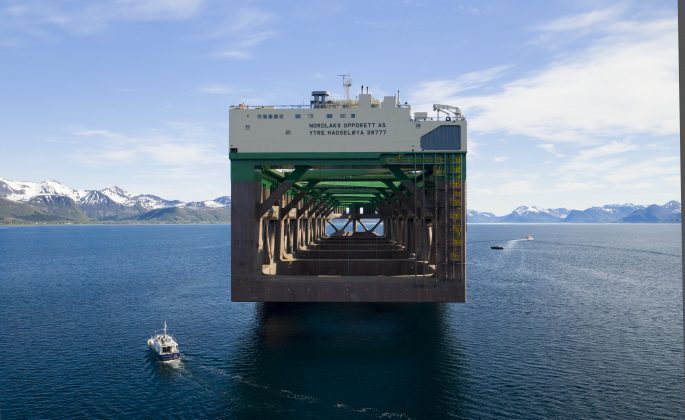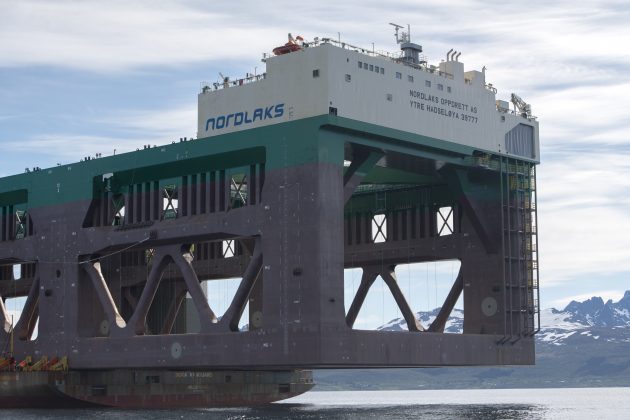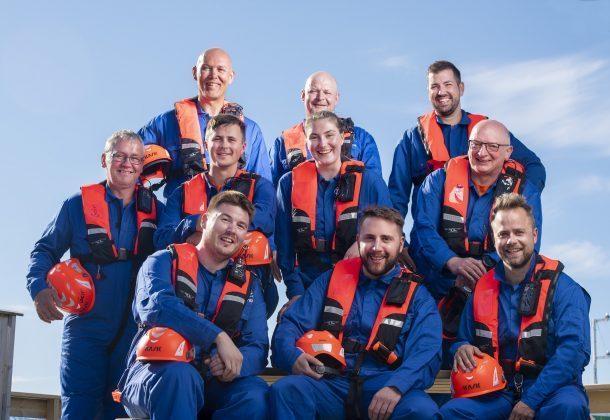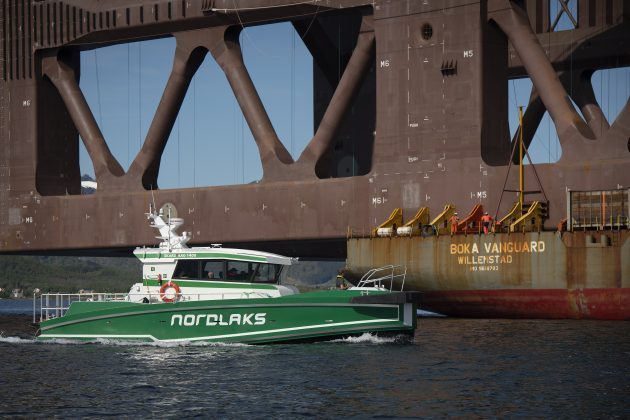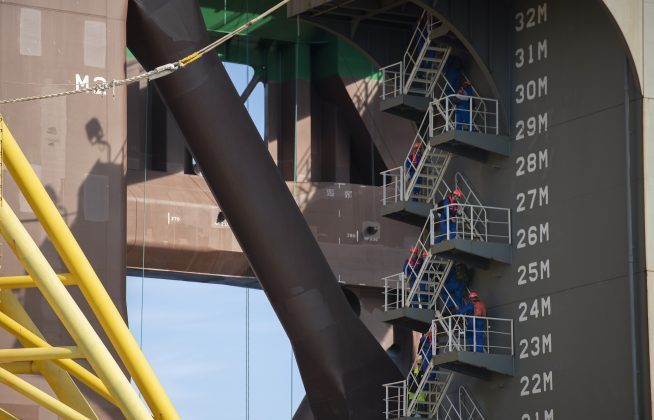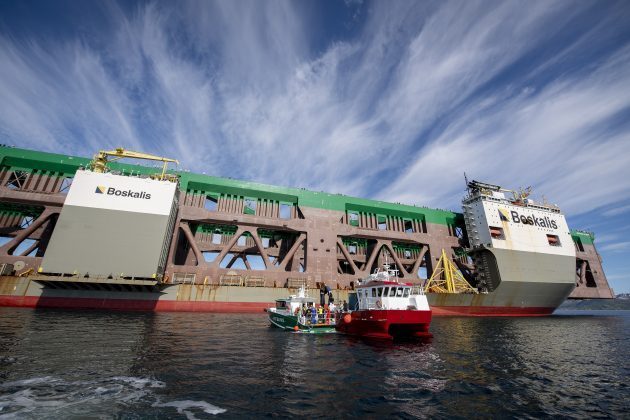On Saturday morning, Nordlaks’ huge vessel finally came home.
After nearly two months of travel from China, the giant salmon farm was in place where it belongs. This is the end result of five years in the making.

On Saturday at 7am, the Havfarm sailed into the Hadselfjord, Northern Norway.
Its crew then first embarked for the first time “Jostein Albert” (ed. named after longtime Nordlaks chairman Jostein Albert Refsnes).
The 385m long ocean farm weighs 33,000 tonnes and will hold two million salmon.
“There are only a few steps over that gangway, but for Nordlaks and for the Norwegian aquaculture industry this is an anniversary and a big step in the right direction,” Nordlaks wrote on its Facebook page.
Water will get under the “keel” either on Monday or Tuesday.
In the next few weeks, “Jostein Albert” will be unloaded and placed on the site outside Ytre Hadseløya, according to a press release from Nordlaks.

“We are looking forward to getting started with the work, which in total will take just over a week from Havfarm towed by the cargo vessel until it is in place and anchored at the location Ytre Hadseløya,” said Trond Haakstad from Sea System, which has the responsibility for the work on unloading, towing and anchoring on location.
- Read more: “The heart skips a beat every time we get updates on how close Havfarm is to getting home”
The cargo vessel “BOKA Vanguard” and Havfarm will now be temporarily in the Lekang, Hadselfjord, Nordland, Northern Norway.
“During Monday or Tuesday, the sea protection, which has kept Havfarm firmly on the cargo vessel, is removed on the two-month journey from China to Norway. We will also lower “BOKA Vanguard” into the sea so that “Jostein Albert” gets water under the “keel” and floats it off the cargo vessel. Then “BOKA Vanguard” has completed its mission,” Haakstad explained about the unloading operation, which is expected to take about three days.
When “Jostein Albert” is relieved in a safe and sound manner, it will be towed from Lekang to a final location outside Ytre Hadseløya. During the operation, the ballast tanks will be filled, and Havfarm will be further lowered in the sea than it is at the time of unloading.
“Towing will take less than a day, and will be carried out by four of the tugs involved. It is their job to keep Havfarm in place while it is attached to the moorings at the location,’ Haakstad explained.
Fish in “Jostein Albert” in September
When the installation on site has been completed by Haakstad and his crew, Nordlaks together with a number of suppliers will embark on the work that remains to be completed, finally ending with salmon being put in Havfarm.
“The plan is for us to have fish in Havfarm in September, so now it will be a hectic period with many suppliers and a lot of personnel working on board to make sure everything is clear. At Melbu (Northern Norway) you will probably notice that there will be some activity both in the harbour and in the hotel going forward,” added Nordlaks project manager Bjarne Johansen.

